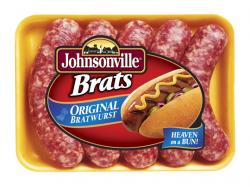Johnsonville Sets Sights On Growing Globally
October 4, 2011 | 1 min to read

In 2005, after spending more than two decades trying to be the greatest in its industry, Johnsonville Sausage LLC proclaimed it had become just that.
The company's sausages were the No. 1 retail brand, based on scanner data from supermarkets and other stores.
So the privately held Sheboygan Falls company set its sights on a new goal: to be the best company in the world that just happens to make sausage.
The metrics for the new goal might be a little fuzzier, but Johnsonville members – that's the name the company uses for its employees – are ready for the challenge, said Kevin Ladwig, a vice president.
To read the rest of the story, please go to: Journal Sentinel
